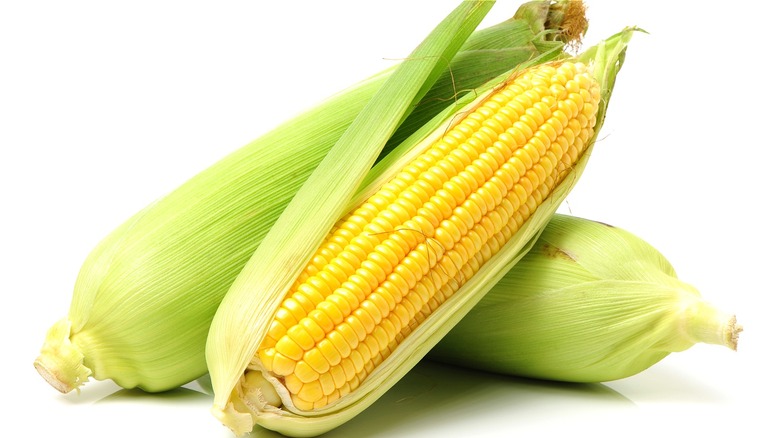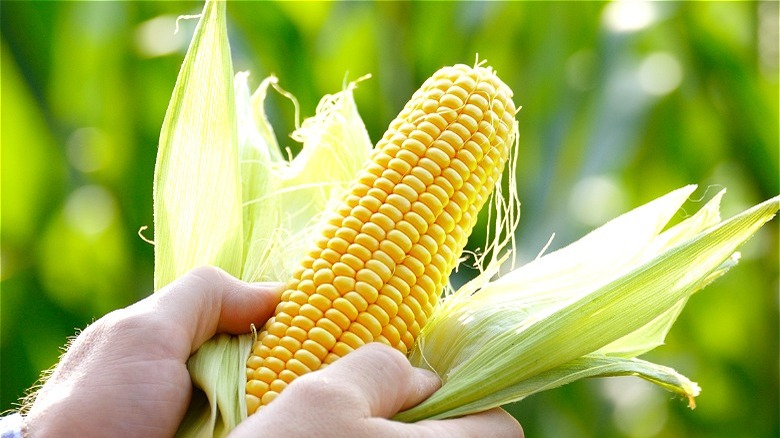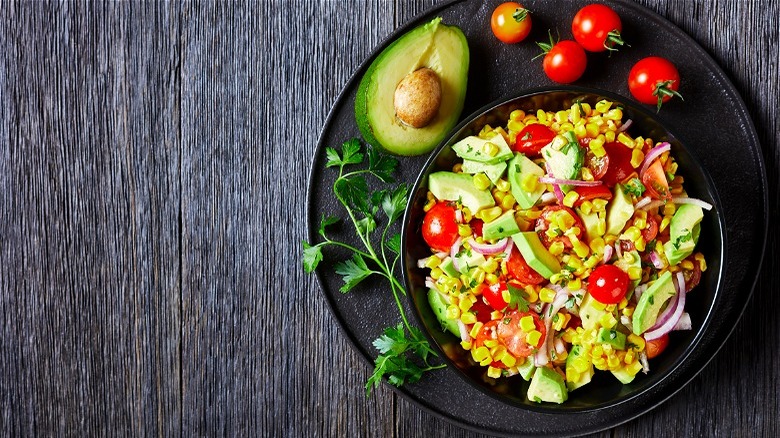Is It Dangerous To Eat Raw Corn On The Cob?
Most of us probably assume, without even looking at the associated statistics, that corn is one of America's top-producing crops. The USDA says that corn was the most popular crop grown in the U.S. in 2019, taking up over 65 million football fields of planted acres. But beyond its many uses as an everyday food source for humans, the unique multi-level grain also feeds millions of livestock and is also used in the production of gasoline. While corn has been a staple food for Native people for years, this versatile plant still remains exceedingly popular in the United States. According to Statista, in 2021 and 2022, Americans consumed approximately 12.4 million bushels of corn.
Britannica confirms that corn has been around for thousands of years — even popcorn is tied to ancient history through teosinte, the green grass linked to corn's foundational roots.
Reader's Digest showcases how corn can be both a grain and a vegetable, depending on the time of harvest. When corn is picked and eaten fresh while the kernels remain supple, corn is considered a vegetable. Even though Green Giant's 2022 favorite veggie survey awarded broccoli as America's favorite vegetable, corn came in second, garnering the votes of 11 states (via The Shelby Report). While eating corn on the cob has become a nationwide summertime tradition, most of us grill or boil it first. Are there any risks associated with eating corn on the cob raw?
Raw corn on the cob is perfectly safe to eat
While AgriFarming notes that you're most likely to find the freshest corn in the nation's top-growing states, including Iowa, Nebraska, and Ohio, there are certain things to look for when picking a fresh ear of sweet corn. According to UCHealth, you don't need to pre-peel the outer husks to tell if those ears of corn are safe to eat. By feeling the cob from top to bottom, assuring full kernels reach the top of the ear should be sufficient.
Now that you have some fresh, ready-to-eat ears, if you'd appreciate some variety in your corn consumption, Utopia assures readers that there are no dangers in eating corn on the cob raw. In fact, your body will retain the maximum amount of nutrients corn provides when chomping down on a raw cob, including potassium, vitamin B, and folate. Just make sure to get the freshest corn available, wash the ears well, and enjoy in moderation (per Utopia).
And don't fret if you're unsure of what to make with sweet corn. There are many ways to enjoy this popular food, apart from eating the kernels directly off the cob.
Different ways to enjoy raw corn
There's a lot of variety when it comes to enjoying raw corn. You could opt for a nice, bright corn and tomato salad, tossed with a simple vinaigrette. Or, try a Mexican corn salad recipe with cotija cheese.
Beyond salad, Myrecipes suggests adding raw corn to fresh salsa, folding the kernels into a crab cake mixture before cooking, or adding raw corn to your favorite soup. The Rawtarian even has a recipe for raw corn chowder that can be made right in your blender with just raw corn, cashews, water, and salt.
For sweet treats, while not necessarily enjoyed 100% raw, you may want to try sweet corn and maple ice cream. Eating corn on the cob will forever be a seasonally appropriate, enjoyable activity. But the surprisingly good news? You don't even have to cook the cobs before taking that first juicy bite.


